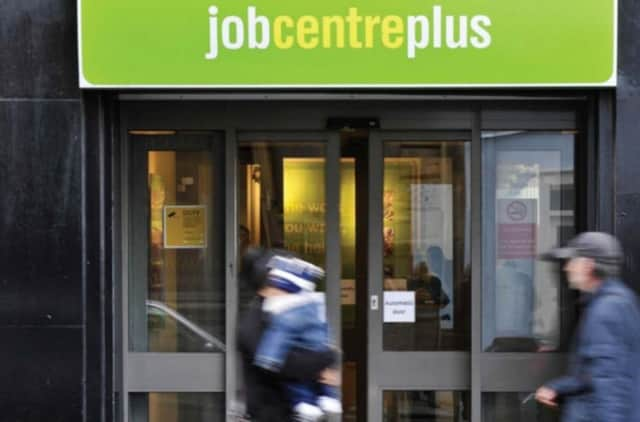Unemployment numbers fall again in December but rate slows


Nevertheless, the figures show the jobless total fell by another 800 people during December, the ninth consecutive fall, bringing the claimant count to 32,700 representing 3.6% of the workforce.
The current jobless total is still above the region’s low-point of September 2007 where unemployment was 23,500.
Advertisement
Hide AdAdvertisement
Hide AdThe figures were welcomed by Economy Minister SimonHamilton, but Ulster University economist Esmond Birnie said the data indicated there was more going on behind the headline figure.
“The figures published today contain positive messages across a range of key labour market indicators,” he said.
“In particular, the reductions in unemployment over the medium term and the further and continued decreases in the number of people on the unemployment register.
“In addition, employee jobs have continued to increase over the year in NI but estimates show the rate of growth is beginning to slow.”
Advertisement
Hide AdAdvertisement
Hide AdFor that reason, he said it was important that businesses continue to develop through research and development, seeking new markets and promoting inward investment.
Dr Esmond Birnie, senior economist with the Ulster University Economic Policy Centre, said there were clear signs that the economy was slowing down
“Unemployment as measured by the Labour Force Survey increased (albeit, marginally, by 0.1% points) in the most recent quarter (September-November 2016), the percentage of the economically inactive increased by 0.8% to 26.5% and Northern Ireland’s employment rate (the % of the working age population in jobs) declined by 0.9%. All this must be taken together with previous data which shows that employment growth in Northern Ireland is increasingly being weighted to the more precarious parts of the labour market- part-time and self-employed.”
It was also worth noting, he added, that in the year to September 2016, the total number of employees in employment increased by only 500. In the year to September 2015, the increase was 9,460.
Advertisement
Hide AdAdvertisement
Hide Ad“It is also true, somewhat confusingly, that the claimant count of unemployed continues to fall- in December 2016 that total was 32.700, a drop of 800 on the month.
“However, taken in the round, the jobs market data are consistent with further deceleration in the pace of economic growth in Northern Ireland in 2017.”